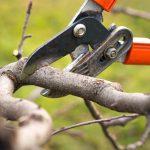 The Art of Tree Pruning: Techniques for Healthy Growth and Beautiful Shapes
The Art of Tree Pruning: Techniques for Healthy Growth and Beautiful Shapes
Trees are not just beautiful additions to our landscapes; they provide shade, purify the air, and offer numerous environmental benefits. However, like any living organism, trees need proper care and maintenance to thrive. One crucial aspect of tree care is pruning. Pruning not only helps trees grow healthily but also contributes to the creation of beautiful shapes that enhance the overall aesthetic appeal of our surroundings. In this blog post, we will explore the art of tree pruning and discuss some essential techniques that ensure both the health and beauty of our beloved trees.
Understanding the Benefits of Pruning
Before we delve into the pruning techniques, let us first understand the benefits of pruning. Regular pruning offers several advantages for trees, including:
1. Removing damaged or dead branches: Pruning helps in the removal of diseased, damaged, or dead branches that can pose a safety hazard. These branches can be prone to falling, especially during storms, posing a risk to people and property.
2. Promoting healthy growth: By removing weak or overcrowded branches, pruning helps improve the tree’s overall structure and allows for proper airflow and sunlight penetration. This encourages new growth, enhances the tree’s vigor, and reduces the likelihood of disease and pest infestations.
3. Shaping the tree: Pruning allows us to shape trees to create a visually appealing landscape. By removing certain branches and redirecting growth, we can sculpt trees into graceful or distinct shapes that complement their surroundings.
Now that we understand the importance of pruning let us explore some key techniques for achieving healthy growth and beautiful shapes.
Techniques for Tree Pruning
1. Timing is key: Pruning should be conducted at the appropriate time to ensure the best results. For most deciduous trees, winter is an ideal time for pruning as they are dormant. However, some flowering trees require pruning immediately after they bloom, as they set their flower buds during the previous season. It is essential to research and understand the specific timing requirements of the tree species you are working with to avoid unintended consequences.
2. Remove dead, diseased, or damaged branches: Start by identifying dead, diseased, or damaged branches that need to be pruned. These branches not only compromise the aesthetic appeal but can also spread diseases to healthy parts of the tree if left unattended. Use clean, sharp pruning tools to make clean cuts just outside the branch collar, the swollen area at the base of the branch.
3. Thin out overcrowded branches: Overcrowded branches can hinder airflow and sunlight penetration. By selectively removing certain branches, we can improve light distribution and promote healthy growth. Focus on branches that are competing for space or crossing each other. However, be cautious not to remove more than a quarter of the tree’s foliage in a single pruning session, as this can stress the tree.
4. Maintain the natural shape: When pruning for shape, it is important to maintain the natural aesthetics of the tree. Avoid excessive pruning that may make the tree look unnatural or unbalanced. Step back periodically while pruning to assess the progress and ensure that the desired shape is emerging.
5. Prune for strong structure: To promote a strong structure, remove branches with weak or narrow crotches or branches that grow at narrow angles. These branches can pose a risk of splitting during storms. By removing them early on, we can encourage the growth of structurally sound branches that are less prone to damage.
Conclusion
Pruning is an essential aspect of tree care that ensures healthy growth and enhances the visual appeal of our landscapes. By understanding the benefits of pruning and following the techniques discussed above, we can foster the development of robust, well-structured trees that create beautiful shapes. However, remember to research the specific requirements of each tree species and consult professionals when dealing with mature or large trees. With proper pruning techniques, we can continue to enjoy the many environmental and aesthetic benefits that trees provide.
Want more gardening tips? Let us help! Contact us today to learn more about what we can do for you!
 The Art of Tree Pruning: Techniques for Healthy Growth and Beautiful Shapes
The Art of Tree Pruning: Techniques for Healthy Growth and Beautiful Shapes